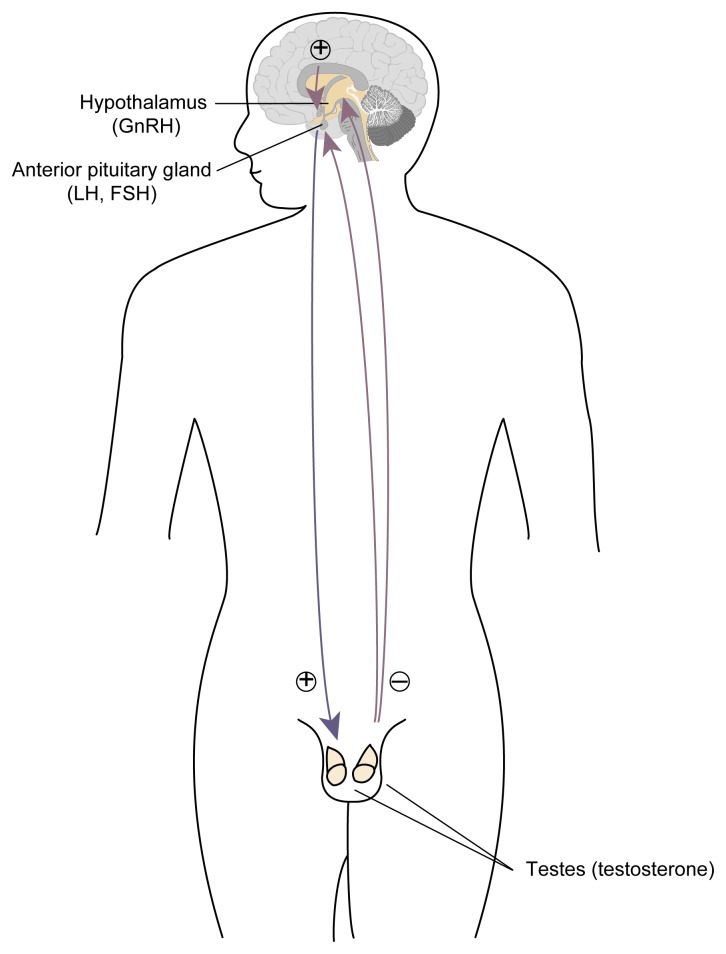Components of the hypothalamic-pituitary-gonadal axis. The hypothalamus releases gonadotropin-releasing hormone (GnRH) to the anterior pituitary gland, which in turn releases luteinizing hormone (LH) and follicle-stimulating hormone (FSH) into the bloodstream. LH and FSH circulate to the testes, which release testosterone in response. When testosterone levels in the blood rise, the anterior pituitary becomes less responsive to GnRH stimulation; as a result, both LH and FSH secretion diminish and testosterone levels fall. This process is called a negative feedback mechanism. Likewise, when testosterone production declines, the anterior pituitary becomes more responsive to GnRH and increases its release of LH and FSH, thereby stimulating testosterone production.
NOTE: ⊕ excites; ⊝ inhibits. Testosterone may also have a negative feedback effect on GnRH.

